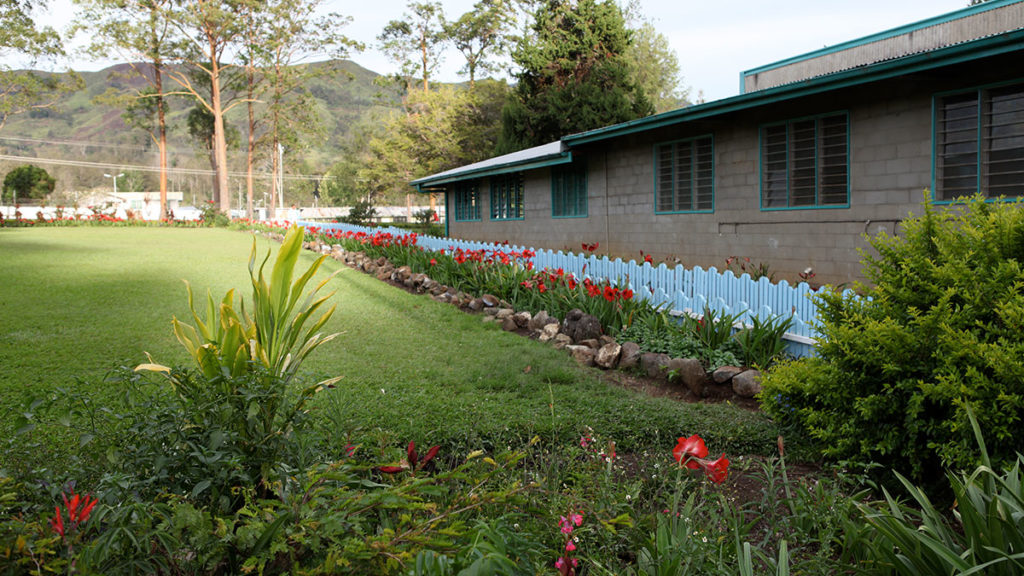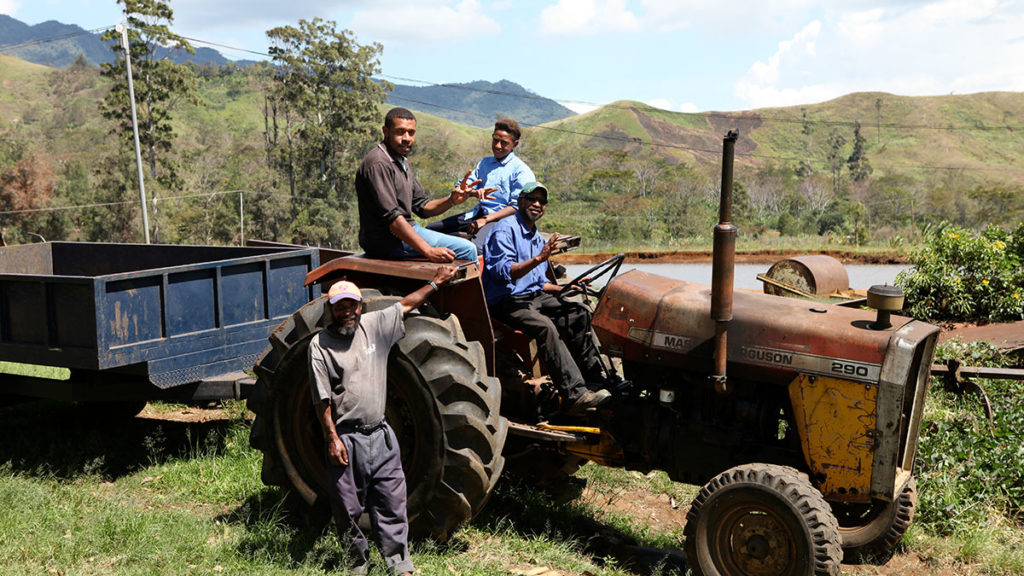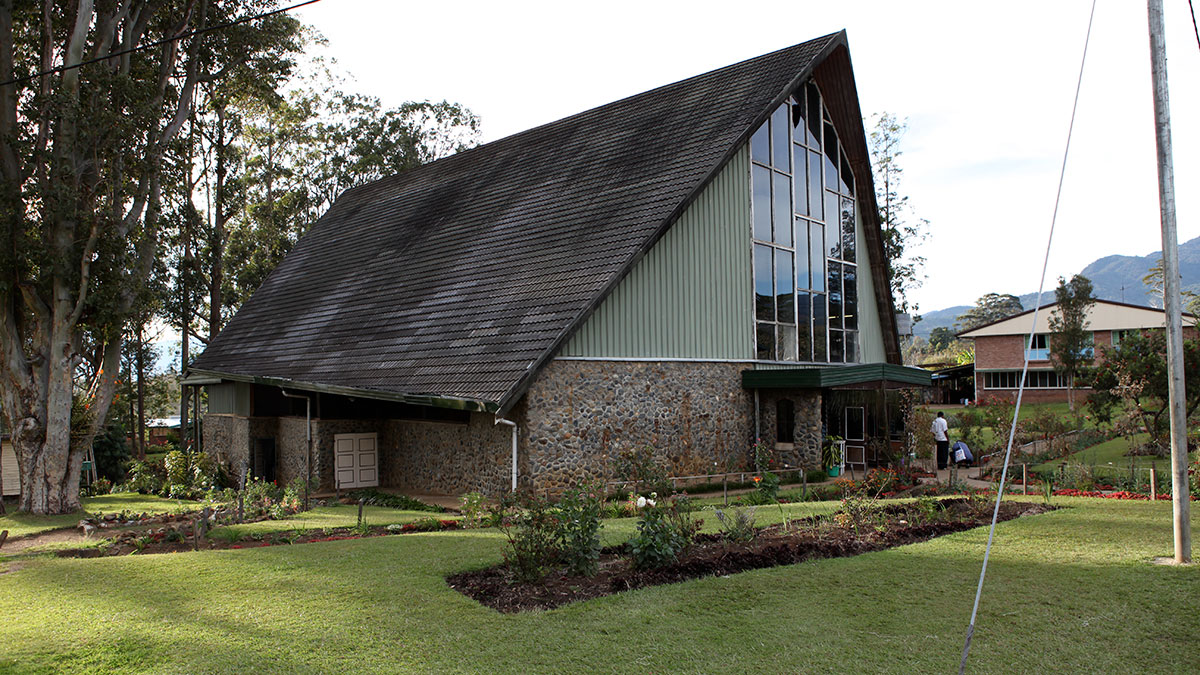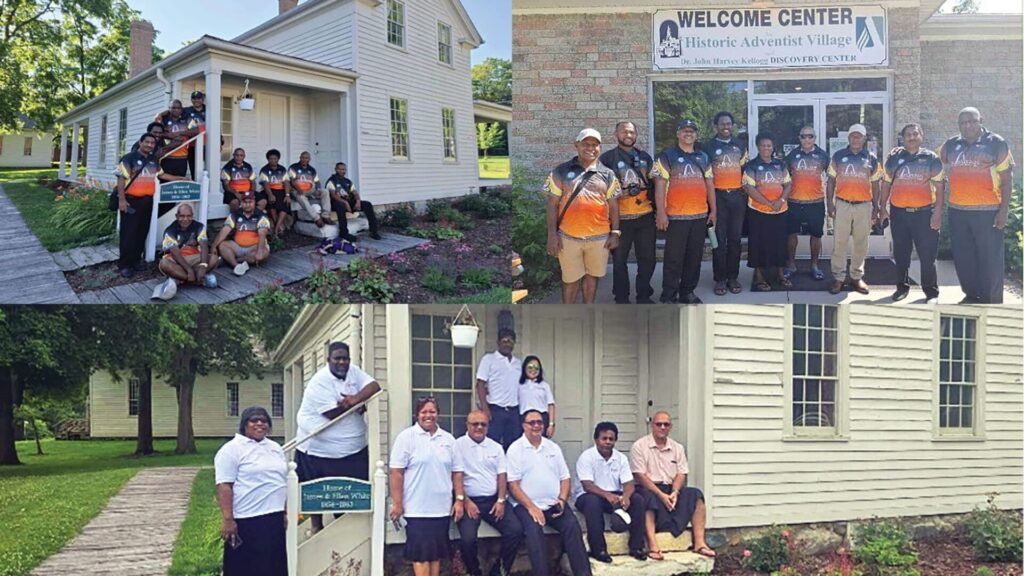Kabiufa Adventist Secondary School is located on the Highlands Highway, 10 kilometres north of Goroka, in the Eastern Highlands province of Papua New Guinea. The school is 1750m above sea level and has a pleasant climate. It offers all levels of secondary education. It is an institution of the Papua New Guinea Union Mission in the South Pacific Division.
When expatriate missionaries returned to the highlands of Papua New Guinea after World War II, a committee meeting was held at Kabiufa station near Goroka in August 1949, where the decision was made to develop the site as a major training centre. Omaura station had previously been considered, but its small size and poor-quality soil were distinct disadvantages. Kabiufa had excellent soil and a good water supply that could cater to a large number of students and render the institution largely self-supporting.
Lyndon Thrift was appointed to establish a school on the site. He arrived in September 1949 to organise a deep perimeter trench around the property to prevent pigs from spoiling the garden crops. He organised the local men to cut a road over which heavy equipment could be hauled to build a sawmill. Logs were felled nearby for construction of two European houses and the main school building.
Two teachers from Mussau Island, Moses and Masibau, did their best initially to hold classes with very little equipment. Frank Maberly arrived to spend most of his time on the school work, releasing Thrift for general oversight and further development of the premises. This arrangement existed until Thrift was transferred in 1952. They called the institution the New Guinea Highlands Missionary School.
Alexander Campbell briefly replaced Thrift and Maberly, followed by Kenneth Gray in 1954. In the same year the institution’s name was changed to Coral Sea Union Training School. Gray had a staff of eight teachers to assist him. Alfred Chapman served as principal in 1957, and John Lee replaced him in 1958.

In 1959 two West Australian builders, John Fitzclarence and Maurice Fairall, constructed a large block of seven new classrooms in addition to office space and a library. It was officially opened on April 20, 1960, with church and government officials in attendance for the occasion. These enlarged premises were urgently needed, because enrolment numbers had risen to 200 students.
In the late 1960s an American volunteer, Dr Jacob Mittleider, greatly improved the 99 hectare (245 acre) farm.
By 1962 the institution was officially functioning under the name Coral Sea Union Mission College, although the church press had referred to it as a college as early as 1960. The first graduation of young adults took place at the end of 1962, 25 men and one woman receiving diplomas in teaching and Bible instruction.
For seven years—1965 through 1971—the institution was named Kabiufa Adventist College, and then became known as the Kabiufa Adventist High School. During the 1970s the first four levels of high school were offered, but in the 1980s it was increased to six levels. In 1984 there were 277 students: 209 boys and 68 girls in grades 7 to 12. Most of the parents (56 per cent) were subsistence farmers. The students were cared for by 15 teachers and 40 other staff when they worked on the farm, in wood products and other places. Teaching staff continued to be composed of both expatriates and nationals, numbers fluctuating between 16 and 20. Garden produce was supplied in abundance to Port Moresby and Lae markets, verifying the wise choice made in the 1940s to develop the property. Chartered planes flew vegetables to Port Moresby and trucks took them to Lae weekly. The proceeds made a significant contribution to school finances.
The first national Papua New Guinean principal was Samson Kuku in 1991. A further name modification occurred in 1999 with the adoption of Kabiufa Adventist Secondary School. In 2007 there were 24 staff members to care for a total of 514 students. The following year enrolment numbers reached 649 without the addition of extra staff. This school continues to be coeducational and consists of all levels of secondary education. It provides quality tuition in English, mathematics, the sciences, history, geography, economics, business studies, religion and physical education. Successful graduates may apply to attend a university, including Pacific Adventist University.

Dr Milton Hook. Entry taken from the Seventh-day Adventist Encyclopedia online.






